The old adage “you can’t judge a book by it’s cover” has been a general rule for most readers since the time books began to have cover art. With comic books however, when half the experience is very heavily defined by it’s art, a comic book cover can be a pretty good judge as to what you can expect to find within it’s contents. Comic book covers are so popular that often the back of a trade paperback of whatever comic you may be reading is the cover gallery (a collection of the various covers that that specific comic book run featured with it’s initial release month to month). Much like the previews before a movie, I always look forward to the cover art in the back of the comic. For close to a century we’ve seen comics come and go, but these truly historic comic book covers changed the industry and defined the characters they feature within the minds of the readers long after the story within has been told. These are 10 of the most legendary and historic comic book covers to have been seen in the industry.
X-Men #1 (1991)
Starting out the list is the Jim Lee drawn/penciled cover of X-Men #1. To this day, no comic has sold more copies than this particular issue of X-Men at 8.1 million copies sold. This catapulted Jim Lee into near super-stardom in the comic book industry, which allowed him to gain the clout in order to leave Marvel to help form Image Comics, and later become the premier artists for DC in recent years. The art is the quintessence of ’90s comic book art at the time: energetic, full of action, dynamic movement, exaggerated physique, a fold-out cover; it’s got it all. It set the standard for the X-Men comics/art to come and truly set Marvel ahead of the game during it’s initial release.
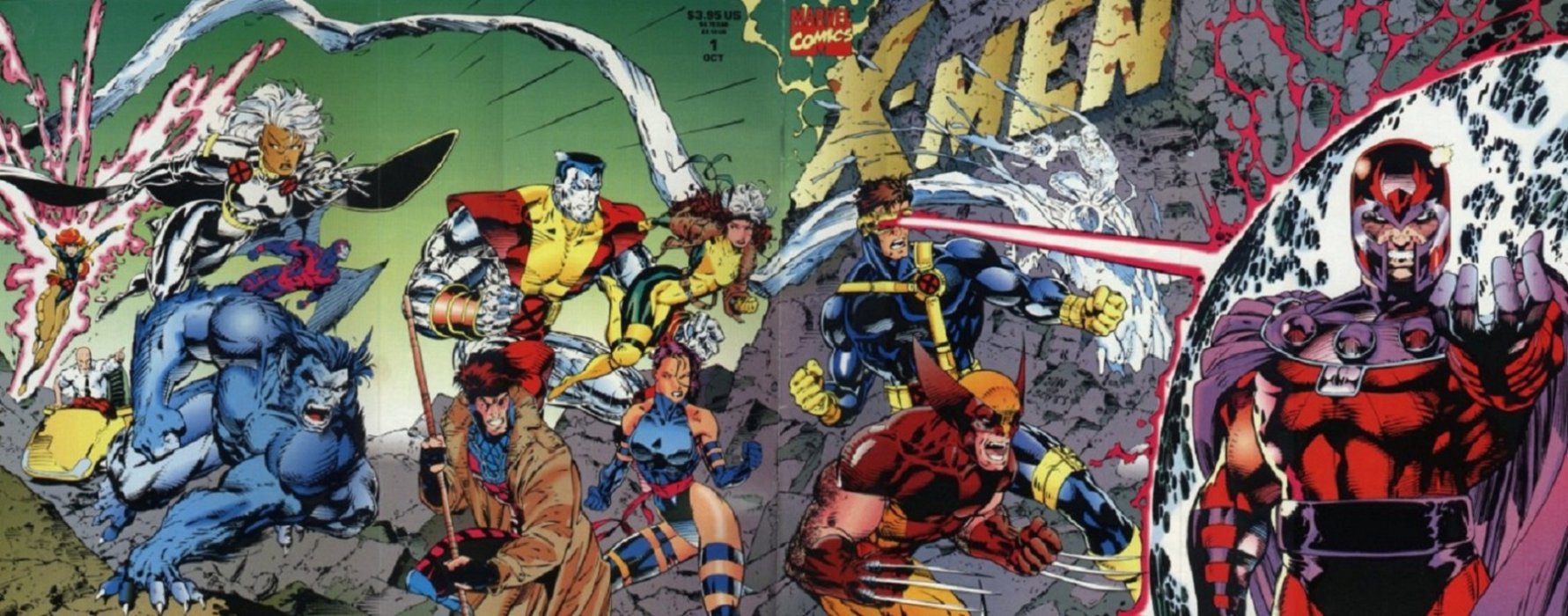
Watchmen #1 (1986)
What is generally lauded as the greatest graphic novel of all time is Watchmen. Alan Moore created some of the most endearing characters, a complex and deeply thoughtful plot, and an amazing world to take part in. Much of this could not have been possible without the art of Dave Gibbons. The composition in the cover of Watchmen #1 is one that begs the reader to find out what happens in this book. A smiley-face with a bloodstain on it, trailing more blood behind it initially intrigued me to find out what all the hype was surrounding this book. Upon reading the book, that bloodstained smiley face has become an icon of not only the Watchmen, but the pinnacle of comic book storytelling as an art form.

Spider-Man #1 (1990)
Around the same time period when Jim Lee was revolutionizing the X-Men scene, Todd McFarlane revitalized the look and feel of the timeless character of Spider-Man. Todd McFarlane would go on to create the beloved Image comics character Spawn. In the comics Spider-Man is described as having very elastic limbs, which McFarlane identified and accentuated in his art. Up until this point Spider-Man was mostly drawn like a gymnast swinging from a rope. It was McFarlane who drew him in impossible and exaggerated poses as he swung through the city as a lithe and slightly creepy acrobat (he is a spider man after all). The cover here features a massive splash of webs while Spider-Man squats coolly in the center, a pose and a cover that has been mimicked almost every time a new Spider-Character has arrived in the multiverse.

Green Lantern #85 (1971)
Neal Adams is known for solidifying the look of many DC characters during the Silver Age of comics. He had a notable run on Batman as well as a career defining role drawing Green Lantern and Green Arrow, which had begun to crossover more to increase the popularity and sales of both the characters. Green Lantern #85 deals with the struggle that Roy Harper (Green Arrow’s sidekick Speedy) has with an addiction to heroine. The cover shows Green Lantern showing Green Arrow his sidekick shooting up drugs in the very act. The comic sparked much controversy, but ultimately shed light on the scourge of addiction that can threaten anyone. Few comics have transcended the “low art” form in order to affect public change and remain in the publics consciousness.
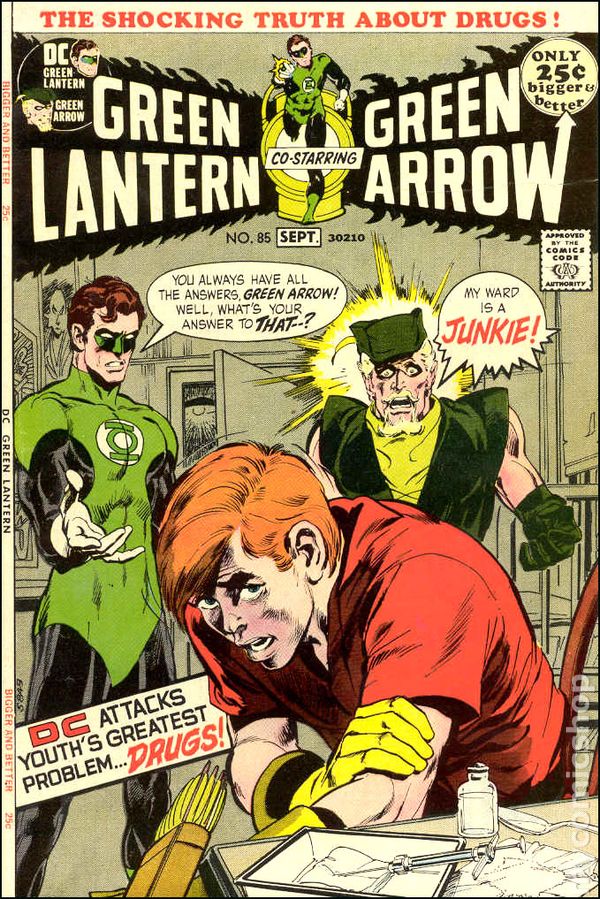
The Invincible Iron Man #128 (1979)
Another comic to shine some light on the subject of rock bottom addiction is The Invincible Iron Man #128: Demon in a Bottle. The comic deals with Tony Starks alcoholism and how it affects his life and his duty as Iron Man. This is known by many as the quintessential Iron Man story and one of the best sagas in the comic book genre. Bob Layton drew the cover to reflect this so well. Iron Man, unshaven, suit jacket over his iron suit deliriously gawks at himself in the mirror. A bottle of booze to his left, and the Iron Man helm staring back at him in addition to his own reflection. The cover truly hits home and leaves a mark on the reader as it chronicles the lows a hero can hit; and that his greatest enemy is ultimately himself.

Superman #75 (1992)
The thing that nobody ever expected to see was the Man of Steel himself meeting his demise. The event and the outcome is in the very title of the comic: The Death of Superman. It was a landmark comic for it’s avid readers and each issue came with a black armband included. The cover drawn by Dan Jurgen’s showcases the somber and macabre imagery of Supermans torn cape draped over the rubble of a catastrophic battle, all while Lois Lane and Jimmy Olsen are left to grieve in the background. Killing the Man of Steel wasn’t the most popular choice at the time, and among many other events led to a comic book industry crash. But the story, and the imagery have always been remembered as a legendarily famous/infamous time in the comic book world all typified by the comic book cover.

Avengers #223 (1982)
Ed Hannigan masterfully drew one of the great Avengers comic covers of all time. It wasn’t a splash page of all the heroes, it wasn’t an overly poetic or dramatic take on the heroes. In a fairly fun and simple fashion, is little Ant-Man about to take a ride on one of Hawkeyes arrows (a scene replicated in 2016’s Captain America: Civil War). Not only is the premise of the cover just very fun to look at, the use of perspective, the angle of the “camera,” and how it makes it’s audience feel was enough to make it one of the greatest covers in Avenger’s history.

Teenage Mutant Ninja Turtles #1 (1984)
The Mirage Comic Teenage Mutant Ninja Turtles by Kevin Eastman and Peter Laird, is one of the great comic book stories of the century. What started out as an indie comic that shares implied origins with Marvel’s Daredevil, became a hit phenomenon in the mainstream entertainment industry sparking animated shows, toys, and movies. The original comic however is dark, gritty, and violent. Originally all the turtles had red headbands, and the inner pages of the comic were black and white, speaking shades of later comics to come such as The Walking Dead. The cover is reminiscent of art from Frank Miller, yet still maintaining a blend of realism and stylized art. Kevin Eastman initially drew the turtles as a comical sketch while coming up with ideas with Peter Laird. Who knew it would become the success story of the late 20th century.

Wolverine #1 (1982)
When Wolverine received his solo series, writer/artist Frank Miller was the one to draw the cover. This cover nailed what the character is by defining his signature trademarks: cocky smile, tenacious attitude, ridiculous hair, and claws; it’s everything you’d want from the Wolverine in just one picture. He beckons not only his foe, but the reader in to read the book and see what really makes Logan tick; solidifying the character in our minds since that issue.

Batman: A Death In The Family (1988)
In four issues, the world of Batman was rocked when his protege, Jason Todd, the second Robin, was murdered at the hands of the Joker. Beaten by a crowbar and then left in a warehouse filled with explosives, Batman only just barely missed Jason Todd’s untimely death. DC famously held a poll for it’s readers to decide is Jason should survive or not, and the young character’s popularity dictated that he should be killed. What resulted out of this was a very depressed and guilt ridden Batman, a boy wonder who later turned out to haunt Batman as the Red Hood, and a cover to memorialize this tragic moment. If you ever find the comic on the shelf, the trade paperback always has Jim Apero illustrated cover of Batman cradling Jason’s dead body, reminiscent of Michelangelo’s Pietà, a sculpture of Mother Mary holding her freshly crucified Son. With this imagery, this event was canonized as one of the lowest and darkest points for the character, earning a place in the readers mind for the rest of time.
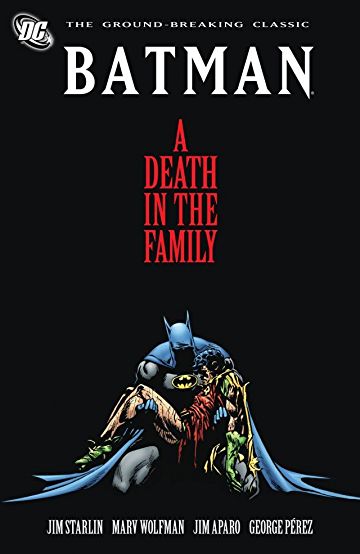
Uncanny X-men #141 (1981)
X-Men: Days of Future Past was one of the most popular X-Men stories and the cover spoke wonders for the characters. The last cover was drawn by John Byrne, and he really outdid himself. The cover depicts Wolverine and Kitty Pride, a spotlight shown on them from approaching sentinels, while behind them is a list of all the mutants slain or apprehended. It’s a chilling cover and enticed readers to find out how Logan and Kitty had gotten themselves into the predicament, and how could they escape. The contrast with the light and the expressions on the character’s faces showed that this comic meant business and will not be easily forgotten (especially with a live action adaptation still on our minds).

Batman: Harley Quinn #1 (1999)
Harley Quinn is one of the few characters who famously made the jump from DC’s animated universe to the comics pretty seamlessly. Her story is a rather tragic one, involving a psychologist turned mad by the Joker and devoting her entire life to this madman. Whenever you want first class art that looks like a Normon Rockwell painting, you get Alex Ross to do it. This uber iconic representation of the characters on the cover really expresses what these two are all about and exemplified their relationship (later replicated in 2016’s Suicide Squad).
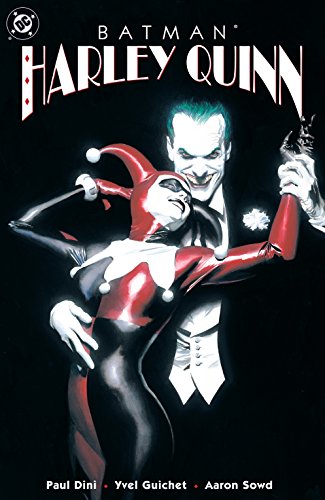
Captain America Comics #1 (1941)
One of the most iconic representations of Captain America is that of our hero Steve Rogers socking ol’ Adolf in the jaw. It was the exemplification of America’s hopes and dreams to end the suffering caused by one man. The character became a symbol of the American way, and all of this was thanks to the art of the illustrious Jack Kirby. The cover is so dynamic and portrays movement in such a nice way that passerby’s couldn’t help but smile as they saw this cover. There is something rousing about an ideal like Captain America ultimately doing what needs to be done, all typified in this legendary cover of the comic book and American history.

The Flash #123 (1961)
One thing fans love in a franchise of any kind of fiction is the old meeting the new. When the original Flash (Jay Garrick) ended his stories from the 1930s and the Flash mantle was taken up by Barry Allen in the Silver Age, many wondered if the two could ever meet. Barry Allen would read tales of Jay Garrick which inspired him to name himself “The Flash,” but what if the two could cross paths? This comic’s cover showcases that legendary moment when the two come careening to the help of a man in harms way. Carmine Infantino represented the urgency of the two speedsters well, and somehow captures the anticipation of what surely would be a confusing yet still amazing moment to be shared between the Scarlet Speedster and the Crimson Comet.

The Avengers #57 (1968)
The Vision is a fan favorite character among Marvel fans. He’s received so many treatments by many talented authors and artists, but the one that sticks in everyone’s mind is his introductory debut on the cover of Avengers #57. The Vision is drawn by John Buscema as a large towering figure over the Avengers. The monochrome color scheme lends to the sense of dread and panic that the Avenger’s must surely be feeling considering the Vision originally did the bidding of Ultron before coming to the side of the good guys and fighting alongside the Avengers. It’s a stunning cover, and one for the ages.

The Dark Knight Returns (1986)
Frank Miller’s The Dark Knight Returns is what many people call the definitive Batman story. At a time when the Caped Crusader was seen as a pretty hokey hero and a campy vigilante of the ’60s, Frank Millers book transformed the way audiences thought of the character. With his own art, Miller created a simplistic and minimalist cover that still ominously and brutally conveys everything you’d want to know about the character with just his silhouette. Many people’s own images of Batman take heavy inspiration from this books art. It sends chills down the spine to see the outline of Batman lit only by a single bolt of lightening. A truly iconic cover.

Fantastic Four #1 (1961)
Jack Kirby’s arrival at Marvel in the 1960s transported the company into the top spot with creations such as The Fantastic Four. Kirby and comics legend Stan Lee created Marvel’s first family, a relatable, loving group of characters who shared in so many adventures; from stopping bank robbers on Earth, fending off Galactus in space, traveling dimensions, or time hopping. It didn’t matter what they were doing, so long as they were together. This cover showcased all four characters: Mr. Fantastic, Invisible Girl, The Human Torch, and The Thing, stopping a monster popping up out from the street. This image is a staple in the Fantastic Four gallery of moments, and marks a massive landmark in Marvel comics history.

Detective Comics #27 (1939)
The first appearance of The Batman, created by Bob Kane and Bill Finger. Detective Comics #27 offered a hero who foiled the tropes of Superman and Captain Marvel (Shazam) so perfectly that it seemed to be a breath of fresh air. The dark and brooding Batman gave more mature audiences just what they needed. On the cover is a spectacular image of Batman, all grey and black, a criminal in one arm and swinging across the cityscape. Two men, presumably criminals, view the spectacle from an adjacent building, one waving a gun uselessly at the Caped Crusader. The Dark Knight has come a long way since this iteration, with many changes for good or for ill. But any comic fan worth their clout will recognize this cover as one of the greats.

Amazing Fantasy #15 (1962)
One of the greatest comic book covers in history. This issue is the first appearance of the web head himself, Spider-Man. Designed by Steve Ditko and drawn by the King of Comics himself, Jack Kirby, comic covers don’t get much better than this. Like past remarkable introductions of other iconic heroes, this cover shows Spider-Man in the act of busting some baddies. Swinging on a web, chest puffed out and full of mystery, this hero was unlike anything seen before in the comic industry. Simply put, this is a legendary and fitting first appearance for such a beloved and world renowned character such as Spider-Man.

Action Comics #1 (1938)
The first ever appearance of a proper superhero to ever grace the pages was showcased here in Action Comics #1. Story by Jerry Siegel and drawn by Joe Shuster, this comic is the epitome of “pow” action without having to say the words. This single scene is taken right out of the comic which intrigued readers into reading the book to find out why this super-person dressed as a circus strongman is demolishing a car while people run in fear. Is he a hero? Is he a villain? Much like the people in these fictional stories when they first meet a superhero, the people in 1938 wondered these same things as they picked up a copy of Action Comics #1 for 10 cents (now worth up to $3.2 million). Truly an event for the history books as this one issue kicked on a phenomenon that will not stop.

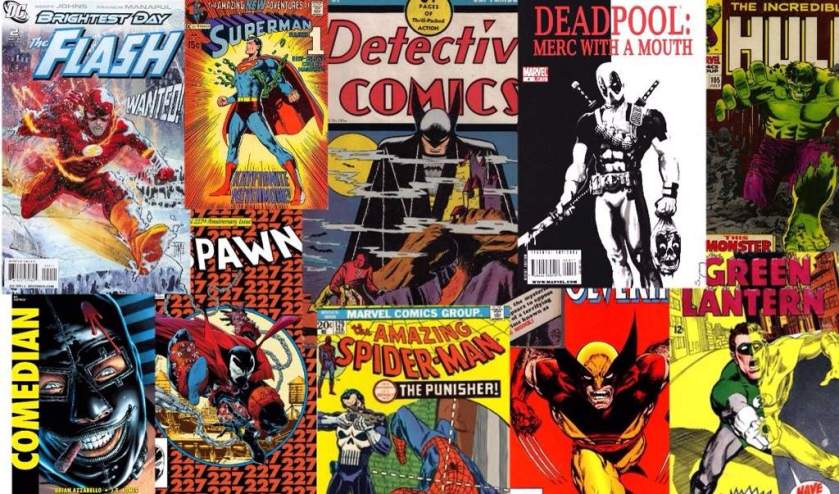
One comment